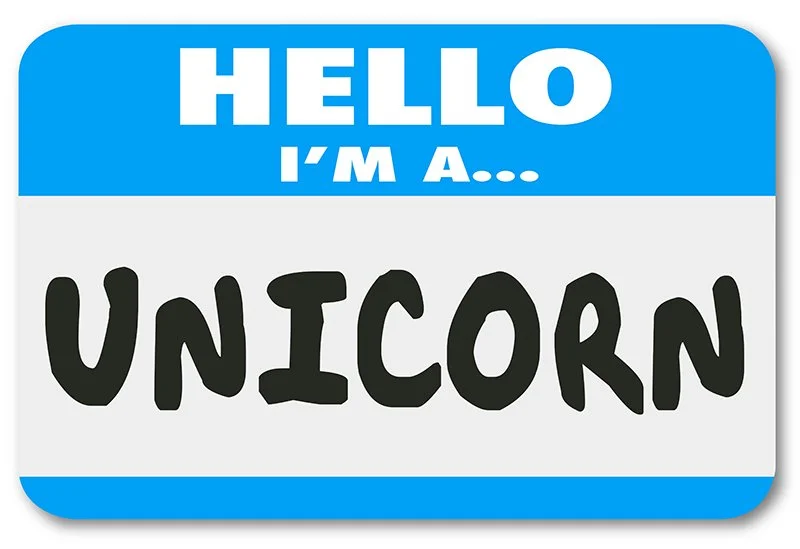Should I Hire an In-House Designer or a UX Agency?
The Problem With Hiring a UX Designer
Do a search on LinkedIn for Senior UX job postings and look at the locations for these positions; they are found all over the map. I have had recruiters call me for positions in Baltimore, MD, and Cleveland, OH. It must be a challenge to either find the right candidate or to convince someone to move … to Cleveland.
We’ve all seen these job postings: “We are looking to hire a strong UI/UX designer who has the ability to really pull everything together.” Usually a contract-to-hire position, paying a variety of salaries. Oh, and no sponsorship for foreign applicants. Click here to fill out our Brutalist corporate job application form.
Really pull everything together… That’s code for: authentic experience. A seasoned technologist or visual designer with skills overlapping into business analyst and software developer. Authentic experience normally includes project management, team leadership and exceptional presentation skills.
For many organizations, there are three problems with hiring "a UX designer":
1. FINDING ONE WITH AUTHENTIC UX DESIGN EXPERIENCE.
UX designer pros are in high demand, with a painfully short supply of experienced practitioners.
2. UX/UI WORK WITHIN A TYPICAL ORGANIZATION HAS PEAKS AND VALLEYS.
There may be a ramp up on the first product design, and again later prior to release. But the work tails-off. Afterwards, the UX designer moves on to greener pastures; either their choice or the company's decision. I have sen both with clients that hired internally, post-engagement.
3. THE ORGANIZATION MIGHT FIND SOMEONE LOCAL, BUT THEY WILL BE MISSING IMPORTANT UX DESIGN SKILLS/EXPERIENCE.
Who to Hire for UX/UI Design Needs
Creating a great user experience takes a combination of leadership, customer insight, workflow analysis, visual design, and precise front-end coding, followed-up with careful user observation. It takes an experienced team that tips the scales in favor of skill-sets over dedicated employment.
A small, focused team is far more likely to meet the hiring team’s requirements. A single individual, experienced with all these attributes is a Unicorn.
So, stop looking for “a UX designer”. Instead, engage with a small team that specializes in product design. By product design, I am not addressing what ad agencies refer to as “interactive”. I am talking about product design: a unique combination of customer research, technology, design, development, and validation. And, if you find a group that includes someone with a background in your company’s product domain, so much the better.
Yes, but what about the cost? Won’t a team cost more than “a UX designer”? Well, what does a Senior UX Designer cost to hire? You know, that person who can “… really pull everything together?” A look at Salary.com is interesting, with similar postings throughout the US in the six-figure range. And, of course, your new employee’s burden is upwards of 21% over the listed salary for benefits and payroll taxes.
And then, there is the “peaks and valleys” problem. What happens after you launch your new product? That UX designer is still on your payroll. Worse, what is meaningful work when the rest of the team is nose-down on development. In our experience, the design process always outpaces the development timeline. So, you really want a design resource that can work/pause/re-engage over the course of a successful product life-cycle, sometimes over the course of a year. This happens routinely with our clients.
Guidelines
Should a client be willing to use a small, specialized design team, there are guidelines to making this work. Guidelines that work for the client and the design team, whether you are working both on-site and remote, or exclusively remote.
I recently wrote a companion piece outlining guidelines for an effective, remote design team. I welcome you to read that post, but here is a summary:
1. Establish Trust - a new client needs to trust you and your team. Focus on an early deliverable to set up that trust.
2. Manage Perception vs. Reality - some clients will have an image in their head of their UX person lounging on a beach. This differs from the reality of a remote team at the white board.
3. Be Affable but Assertive - remember that your team is there to give ability the client does not have internally. Be easy to work with, but do not be a pushover in the name of good collaboration.
4. Practice Good Remote Office Etiquette - be on-time for meetings, make sure everyone has access to the links needed for audio and screen sharing. Choose tools that are reliable but, if possible, use what your clients already use.
And a lot more…
Now, let us look at this from the client’s perspective. In other words, how can the client make the design experience both effective and pleasant for everyone involved.
1. SET EXPECTATIONS
Setting expectations is very important. Why? Because an effective design consultant is there to deliver a result, not to bill hours and chew-up time.
To deliver an impactful result, it is important to know the desired outcome - even if the client cannot articulate what they want, at the start of the project.
One of the things that separates a consultant (subject matter expert) from a contractor (staff augmentation) is helping the client when they are not sure how to help themselves.
In the case of product design, it can mean stepping up to provide missing pieces of the produce design team puzzle.
I often assume a sort-of de facto systems designer role on the team, when that role is absent (either missing or light on experience). Then, job one is to encourage the client to clearly outline what they want from the project – helping the client formulate and articulate their own expectations.
2. KEEP THINGS COLLABORATIVE
Defining everyone’s roles on the team is a wonderful way to keep things collaborative. I am a subscriber to the concept of “Decision Responsibility”. We work as a team and collaboration means thoughtfully considering input from others, but someone must have the responsibility to “make the decision”. And, the rest of the team must commit to that decision, whether they agree it is the best choice.
Teams that cannot do this often fall into a culture of “voting” - sometimes mischaracterized as “consensus”. A voting culture has teams that struggle to make complex decisions and cannot stay focused on what is important. These teams do not deliver on a meaningful outcome, followed by missed deadlines, blown budgets, team defection, et al.
A great client is one that includes a seasoned leader, to whom all the above comes naturally.
3. BE READY TO LAUNCH
Be Ready To Launch means what it says: be ready to go before, well, starting the project.
Starting a product design project is a real commitment. A successful outcome will require focus, time, and energy from everyone involved.
I would rather have a client tell me: “…we need more time to wrap-up other projects …” than to pull the trigger on a project, execute a contract with a start date, and then no one is available for introductory discussions.
A terrific way to mitigate launch hesitation it to outline project milestones in the agreement. In addition to deliverables, include requirements. For example, specify what you, the consultant, needs from the client to meet those milestones. I will go as far as to specify subject matter experts needed to complete a given deliverable, as well as to outline the interaction model (i.e. meetings or travel required).
Consultants live in the real world; we are all busy and ’stand-by’ is an acceptable answer.
End Note
These are good guidelines for leading your employees, as well as your consultants.
Share your experiences in the comments section about working with contract teams – we are all here to learn.
Ken Krutsch is Managing Principal of KRUTSCH Associates, a digital product design firm, specializing in product vision and realization, including customer research, roadmap development and full-stack user experience design.
Follow KRUTSCH on LinkedIn to see more posts on being a UX Leader.






